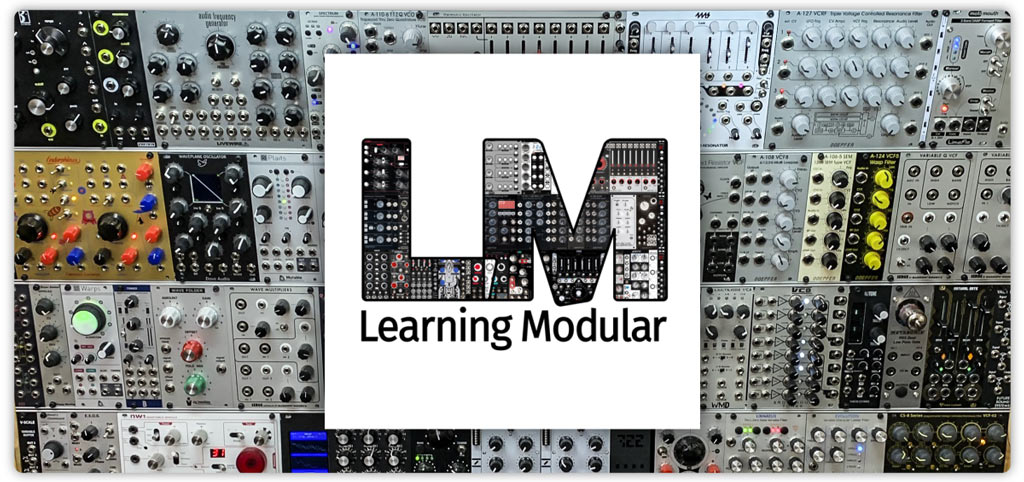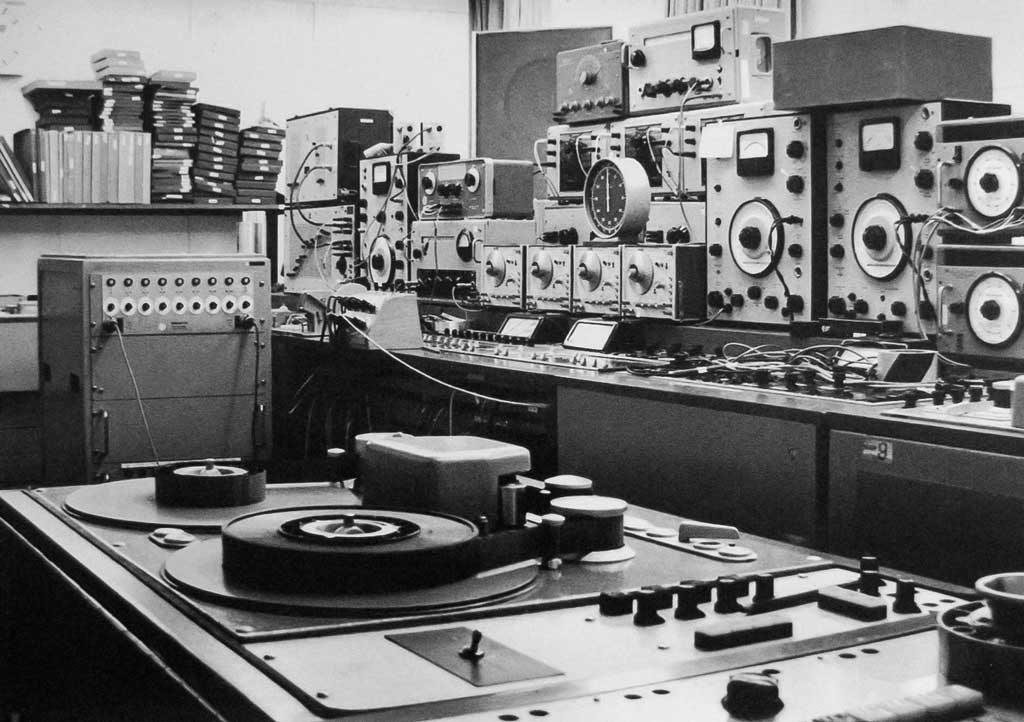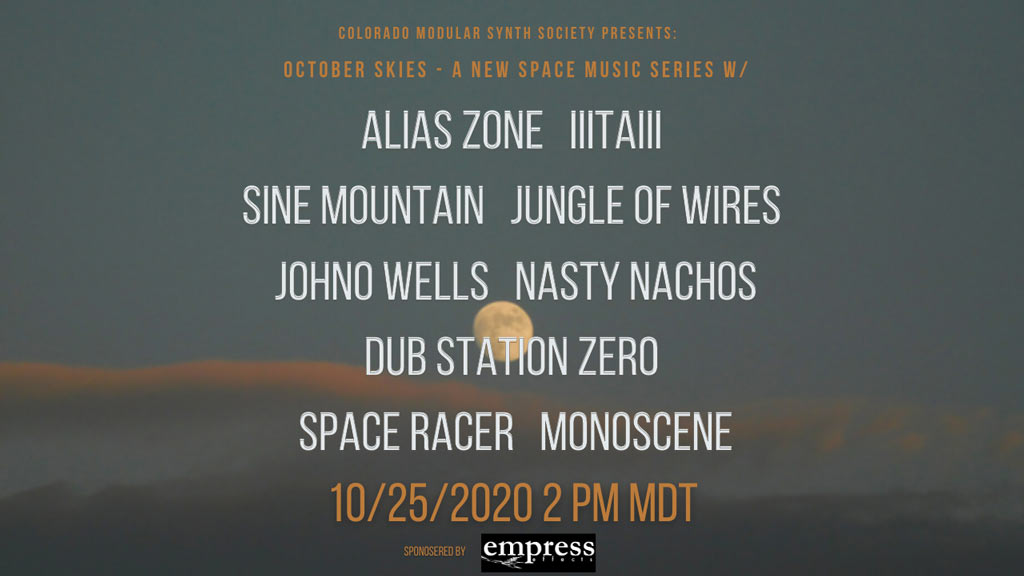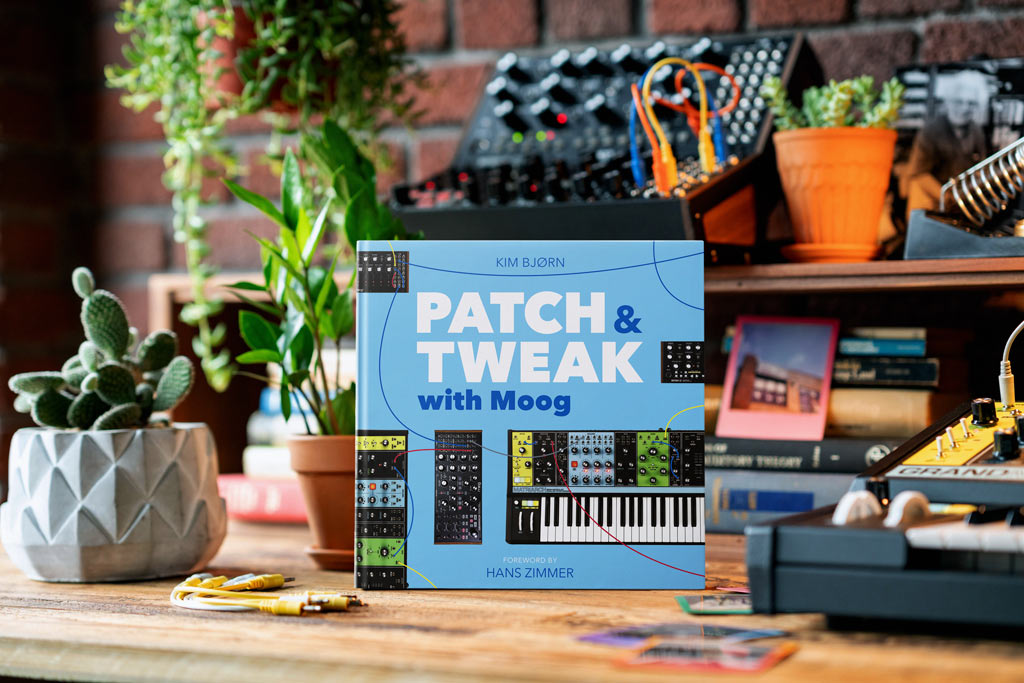My main focus last month was composing, performing, and otherwise documenting a pair of modular synth performances: the angst-ridden Fear Itself for our local New Mexico modular meetup, featuring my gigging system The Tardis, and the longer-form, more cinematic Ash Tree Window for the Colorado Modular Synth Society’s October Skies “space music” online festival, using my studio system The Monster.
After getting a chance to step back from both of those now, I wanted to share some of the overall thoughts about composing music with modular synths that went into the creation of these pieces. I also have a few other updates, including a presentation I’m giving online in mid-November, and the latest book by my good friend Kim Bjørn.
- featured article: Some of the approaches I use to make my modular performances more human, and hopefully more interesting to listen to.
- new videos & posts: In addition to the extended space music/Berlin School piece that was the focus of the featured article, I also created another one of my quirky beats + text pieces.
- course updates: A video breakdown of the sounds and performance details in Ash Tree Window has now been added as a bonus chapter to my Level 1 and 2 courses.
- Patreon updates: In addition to detailed explanations of the two performances mentioned above, I’ve also been diving into the early history of electronic music.
- upcoming events: October Skies & SoundMit 2020: Virtual Edition.
- one more thing: Patch & Tweak: Moog.
Thoughts on Modular Performance & Composition
After creating my series of online modular synth courses, for the past couple of years I have been focusing on learning my “gigging” case The Tardis. I use it to act as an improvisational percussionist when I play with other musicians. I’ve also composed a few odd little solo pieces for it, which combine beats, text, and soundscapes in a genre-defying manner.
More recently, I’ve finally started composing for my larger studio system The Monster. This work has taken me back closer to my roots in Berlin School and space music. The piece above – Ash Tree Window – is my first full-length example of the latter.
Through this process, I’ve developed a few general philosophical approaches to creating music with modular synths that I thought I’d summarize and share.
Make Each Note Sound Different
One of the main differences between human and machine performances is how similar a note is to the ones before and after it. Most people can recognize a snare roll or hi-hat pattern performed on a drum machine, as every hit is usually exactly the same – compared to the natural variations a live drummer would introduce. I’ve been wanting to introduce those variations into modular performances in general, without sounding too random or sloppy.
My favorite way to do this is to patch a sample & hold to various parameters that make up a synth voice, but to use relatively narrow voltage ranges to create small variations from note to note. In the piece above, I split the trigger out for the various sequencer lines, and had it also trigger channels in a DivKid/SSF RND STEP sample & hold module. This provides up to six random voltages in response to each new note event.
In Ash Tree Window, these randomized voltages were then patched to parameters including the cutoff of the filter built into the Birdkids theBateleur analog VCO, one of the four waveforms used by the Dove Audio Waveplane digital VCO, the Damping parameter of both the 2hp Pluck and Mutable Instruments Rings, and the Position parameter of Rings. In the video below for Fear Itself, the RND STEP was patched to Harmonics of the SSF Entity Percussion Synthesizer used for one of the bass drum sounds, as well as various parameters of the WMD Crucible for the hi-hat part. (Other randomization tricks were also used to break up the pattern and length of the individual hi-hat hits.)
I ran those randomized voltages through attenuators (either built into the module, or in an external module), and set the amount fairly low. This way the changes sound more like small human variations than huge, obvious random swings. Half of the channels on the RND STEP are unipolar, which in its case means half of the time the output is 0 volts, and half the time it would be a random positive value – another way to choose variations that are more subtle.
I combined these randomized effects in a few different ways. For example, the subtle changes to sounds produced by the Waveplane and theBateleur oscillators were layered together to create more complex variations. Similarly, combining two subtle random value changes to Position and Damping on Rings combined to add a richer variation from note to note in Ash Tree Window.
Create Flowing Variations Overall
I love the “trance” feeling of repetitive sequences, drum loops, and the such. But I also personally prefer to feel like I’m being propelled by them on a journey, rather than jogging in the same place as if on a treadmill.
Therefore, I also like to introduce slower variations that happen over time, as well as on every single note. The normal way to do this is to patch a slow LFO to the filter cutoff, oscillator waveshape, or similar parameter. The Waldorf nw1 wavetable VCO has a “travel” speed where it will scan through the selected wavetable over and over in a seamless loop, which is a similar effect. Also in Ash Tree Window, they were patched to the Decay parameters for both Rings and Pluck so the notes would slowly glide from long to short. And in general, I like to patch these slow modulations to the stereo pan position of otherwise monophonic signals.
Personally, I prefer to use chaotic modulators rather than normal LFOs: they tend to have smooth yet more complex waveshapes than your typical sine or triangle wave LFO. These shapes also tend to evolve over time to break up the otherwise-repetitive pattern – like the flowing hills of a landscape passing by outside a car or a train’s window.
Many chaotic modulators provide multiple outputs, which are actually “taps” at different points around their internal feedback loop. This usually means they are all running at the same basic frequency, but have phase offsets from each other, kind of like a quadrature LFO but with variations in the actual waveforms.
There is a middle ground between the two above techniques, by the way: At Moogfest last year, modular performer Baseck explained how he liked to use fast LFOs for modulation sources for his sequences and percussion. This meant that each note had a little bend, slur, or similar articulation from the LFO changing value during the life of that note, in addition to each note being different from its neighbors.
Opening Up or Filling Spaces
At one point while composing and rehearsing Ash Tree Window, I had several synth parts all going full-blast at the same time. I loved each of them individually – but when they were all playing at once, it was hard to appreciate them, either singularly or as a whole. I had to think of ways to open up spaces so that each one could take their turns in the foreground.
Of course, one approach is to just fade out or mute a part. And I did some of that: In Ash Tree Window, attentive listeners will note that the 1-note bass throb or 4-note sequence disappear and reappear at different times.
However, I also found it useful to vary how much “space” a part was taking up: allowing it to take up more space when it should be the foreground, and pulling it back to take up less space when it should be in the background. To do this, I played around with both the frequency range and decay times of the plucked and struck parts. I had an ALM Beast’s Chalkboard patched in front of the Rings and Pluck so I could quickly change which octaves of pitches they were occupying. With the Rings, switching it to a higher octave also increased the decay time of the notes; I would also tweak the its Brightness and Decay knobs to change what space it was occupying.
A more subtle trick was using the smooth random voltages from the Frap Tools Sapèl to alter parameters of other modules, such as the overall waveform mix in the Dove Waveplane VCO or the number of poles (the filter slope) used by the Rossum Evolution VCF. Sapèl has a “probability distribution” or bias feature where you can set if its outputs occupy lower voltages, higher voltages, or a wide range of intermediate voltages. That way, I could set if the Waveplane or Evolution were biased toward bright sounds (foreground), or toward more muted sounds (background). An extra bonus of the Sapèl is that it takes a few seconds for it to slew between different bias settings, so I could change it ahead of time, and while it was evolving, I could turn my attention to a different parameter or performance detail.
Bias on the Mutable Instruments Marbles has a related but different effect, which I used for the pitch offset on Mutable Instruments Clouds derivative in Fear Itself.
Playing the Sequencer
Another approach I like to take is to “play” the sequencer. I am not an impressive keyboardist, so I like to make to make up for it by introducing variations in my sequences in real time.
In the video for Ash Tree Window above, my wife Trish shot additional footage that featured which edits I made to sequences: altering the Chance Operations for note skipping or ratcheting, muting notes, and switching sequence “parts” on the Five12 Vector Sequencer.
In the video for Fear Itself below, I clock the sequencer (a Noise Engineering Vox Digitalis) with a Mutable Instruments Grids clone, and vary the Fill parameter for the Grids part being sent to the sequencer to change its speed and rhythmic pattern on the fly. This is particularly obvious during the high-energy “solo” in the middle of the piece.
I’m quick to admit I’m not a highly skilled instrumentalist in the traditional sense. Fortunately, I continue to learn how to better collaborate with my modular partner to perform ideas in my head that my fingers won’t quite allow.
New Videos & Blog Posts
In addition to the piece Ash Tree Window shared earlier in this post, I also composed and performed a shorter, quirkier, edgier piece called Fear Itself, which is above. I think it was a subliminal reaction to the lack of stability many of us are feeling between the upcoming US elections and the freshly-spiking pandemic.
Also see the notes on October Skies below, which I participated in under the name Alias Zone – my musical name from around 20 years ago that I’m reviving now for my modular work.
Modular Courses Updates
I want my modular synth courses to contain not just theoretical information, but also information you can apply to your own music. Therefore, I’ve added my performance of Ash Tree Window as well as a lengthy breakdown of each patch plus other tricks to my Learning Modular Synthesis Level 1 Comprehensive Starter Course as well as Level 2 Eurorack Expansion courses. Everyone who previously purchased the courses also have access to these new movies – look for them added to the bottom of the course curriculum.
Patreon Updates
I always treat my Patrons to detailed patch and performance notes for each piece of music I release, on the two pieces above were no exception:
- Track Breakdown: Fear Itself includes lengthy text notes for each of the patches, sounds and techniques uses. (+5v subscribers and above)
- Ash Tree Window: Brief Patch Notes includes the video of the piece, and a list of modules used to create each sound, linked to the time in the movie where they were introduced. (all subscribers)
- Track Breakdown: Ash Tree Window includes a long video where I walked through each of the sounds and demonstrated how I built each one. It also includes sections on sequencer tricks, mixing & effects, and the polysynth parts featuring my new Waldorf Iridium. (+5v subscribers and above)
I also wrapped up my recent run of nostalgia for the early days of electronic music by posting in October:
- a series of resources for those interested in using analog computers and electronic test equipment to create electronic music, and
- a history of electronic music from the creation of the tape recorder to just before the first modular synths appeared.
(both are available to all of my subscribers)
Upcoming Events
This event already happened, but it was announced after the last newsletter, and is one you shouldn’t miss the replay of: Ash Tree Window was created to be part of a nearly three-hour online space music festival called October Skies, presented by the Colorado Modular Synth Society. It was an absolutely brilliant concert that showcases uses of modular synths (plus other instruments, including voice) in different styles than the more common noise and EDM modular genres. Although that said, IIITAIII absolutely burned the house down with his closing set!

One More Thing…
My good friend Kim Bjørn – who I co-wrote Patch & Tweak with – has a new book coming out: Patch & Tweak with Moog. In this solo effort, Kim discussed Moog’s semi-modular synths: the Mother-32, Drummer From Another Mother (DFAM), Subharmonicon, Grandmother, and Matriarch. In addition to a history of Moog Music and interviews with both musicians and Moog engineers, this book includes a lot of patch and sound design tips using those instruments. It was announced several weeks ago, and starts shipping this week (November 6). You can buy it direct from Kim’s publishing company Bjooks, from Moog, or from many of your favorite modular retailers.
November should see me return to creating module videos – I already have one set recorded and awaiting editing, with plans to cover one or two more this month. I also have a few synthesis techniques I want to share with you. But I also have to be honest and admit that if another chance to perform comes up, that will move to the foreground, as I like to compose and record a new piece each time the opportunity arises. Either way, I’m having fun; I hope you are too.
best regards –
Chris





